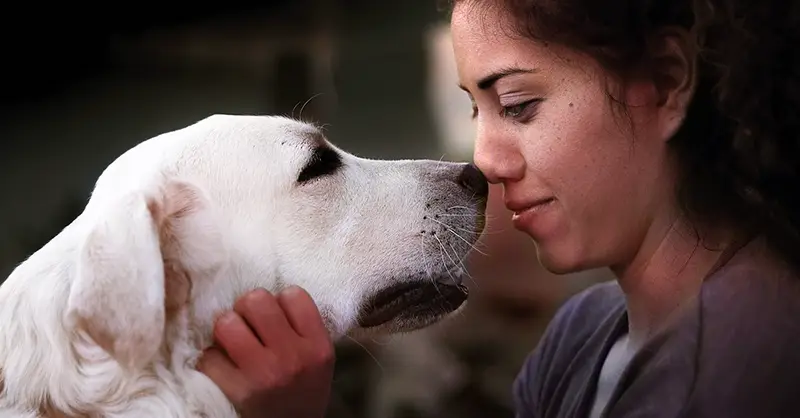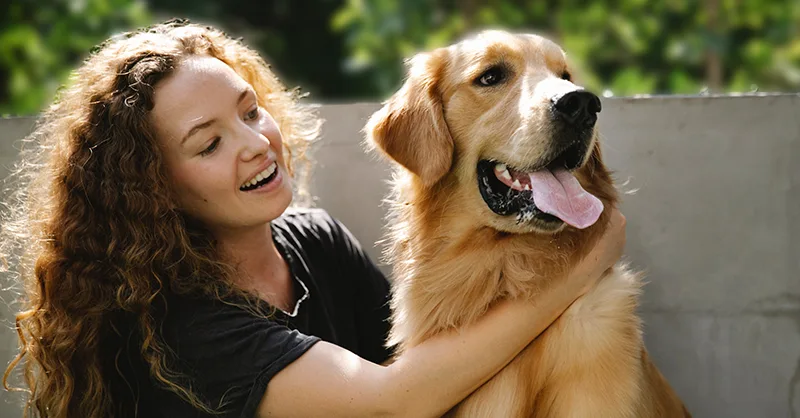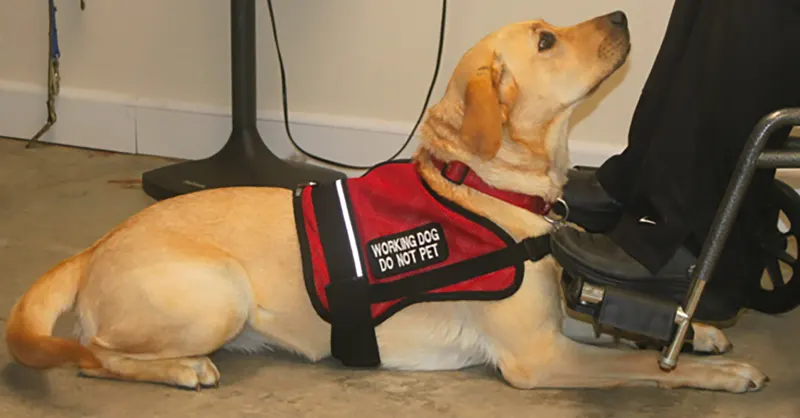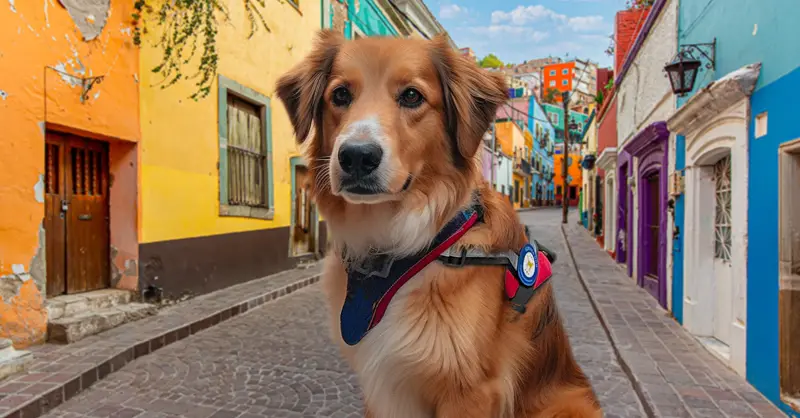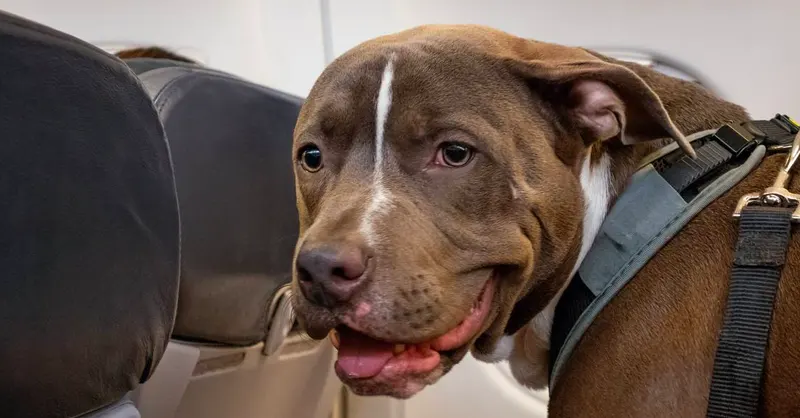Archive for the ‘Travel’ Category
Are you traveling to Canada with a service dog from the United States? Just like on domestic U.S. flights, service dogs are allowed to board the cabin of planes free of charge.
Flying with a service dog to Canada, however, can be a bit more complex than flying within the United States. That is due to the fact that Canada has different documentation requirements for service dogs. In addition, Canadian airlines can also differ from their U.S. counterparts in terms of how they process service dogs.
In this guide, we’ll cover some basics to help you plan your trip to Canada with your service dog.
Gathering Essential DocumentsTo fly with a service dog to Canada, you will generally need the following documents:
DOT’s Service Animal Air Transportation Form Rabies Vaccination Certificate Airline Specific Form The DOT’s Service Animal Air Transportation FormThis is the form required by the U.S. Department of Transportation (DOT) to fly with a service dog to or from the U.S. Both U.S. and Canadian airlines will ask for this form. For U.S. airlines, this is generally the only form you will need to submit prior to your flight.
Filling out the form is easy; you can find instructions at this link.
Vaccination CertificateTo enter Canada, the rabies vaccination certificate must:
be written in English or French be issued and signed by a licensed veterinarian identify the animal (age, breed, sex, color/markings, weight, and microchip/tattoo number if applicable) state that the animal is vaccinated against rabies indicate the date of vaccination indicate the trade name and the serial number of the licensed vaccine specify the duration of immunity (otherwise, it will be considered valid for 1 year from the date of vaccination); and have the name and signature of the licensed veterinarian that issued the certificate and the date it was signed.Note that Canada actually exempts service dogs from the rabies vaccination requirement. However, Canada requires that the dog must be trained and certified by an organization accredited by Assistance Dogs International or the International Dog Federation to be regarded as a service animal.
Most U.S. service dog owners will not have this certification, as it is not required under U.S. laws. Therefore, U.S. service dogs may be regarded as personal pets, and owners should come prepared with a vaccination certificate.
Airline Specific FormU.S. airlines generally only require you to submit the DOT’s Service Animal Air Transportation Form. Some Canadian airlines, such as Air Canada, also require an additional form.
For example, Air Canada may demand an identification card or document issued by an organization or person specializing in service dog training. This request can be difficult for U.S. service dog owners since most do not have this kind of documentation – they are not mandated under U.S. law.
Keep in mind on flights to and from Canada most airlines will require you to submit any forms at least 48 hours prior to your time of departure.
ServiceDogCertifications.org
Handy Extras for Your JourneyTo make your trip more comfortable, consider bringing:
Vests, tags, ID cards, harnesses. Service dog accessories, such as vests, tags, ID cards, and harnesses, are useful at the airport and on the plane. They are typically expected by airline staff and fellow travelers and indicate that your dog is a working animal. PSD letter. If you own a psychiatric service dog, you may want to carry a PSD letter. A PSD letter states that you have an eligible psychiatric condition for the purpose of owning a service dog. Wonder if your emotional disorder qualifies for a psychiatric service dog?Get an assessment by a licensed health professional.These items can be very helpful while traveling. WestJet recommends bringing a registered ID card or other written documentation in the event it is requested by airport or airline staff.
It’s a good idea to travel with copies of all your documents and your service dog accessories.
Before or Right After Booking Your FlightAlways consult your airline for their most recent policies and requirements concerning service animals. Most airlines have a dedicated section on their website or a disability services contact for further inquiries.
This is especially important when traveling to Canada since the requirements for your particular airline may differ from what you are accustomed to when traveling domestically.
Here are links to the service dog policies of popular airlines flying to and from Canada:
Air Canada United American Airlines Delta Alaska Before making any travel plans to Canada with your service dog, make sure to read up on the rules for flying with your dog. In-Flight TipsWhen traveling with a service dog, airlines have specific rules to ensure a safe and comfortable journey for all passengers. Here are some general guidelines for flying with a service dog:
Be prepared to have your service dog harnessed, leashed, or tethered at all times during the flight. Service dogs must fit in the handler’s foot space without obstructing the aisle or other areas. Airlines should work with passengers to find suitable seating, such as a bulkhead seat or one with extra legroom. Your service dog must be well-behaved and not disrupt other passengers. If your dog is unruly, aggressive, or noisy, the airline has the right to refuse transport. You are responsible for providing food and water for your service dog during the flight. It’s a good idea to bring waste bags and clean up after your service dog, if necessary.Lastly, it’s always a good idea to mark your dog as a service animal with items like a vest, tag, or ID card. This will notify other passengers and airline attendants that your dog is a working animal.
Final Tips When Flying to CanadaTraveling with a service dog to Canada from the U.S. can seem daunting, but it’s achievable as long as you’re mindful of your particular airline’s requirements.
Be sure to check your airline’s latest policy before booking your flight. You may want to speak directly with a representative from their accessibility department before settling on a flight. In addition, do consult Canada’s official page for transporting dogs and review their latest rules so there are no surprises when you reach Canada’s customs.
Register your Service Dog and order your custom Service Animal Identification Card and Certificate
Traveling with your service dog on an international flight to Mexico is not only allowed but also free of charge. With a little planning and preparation, you can ensure a delightful and worry-free journey together.
In this guide, we’ve got you covered with all the essential information to make your flight with your service dog to Mexico a breeze.
Gathering Essential DocumentsNavigating the world of travel with a service dog may seem daunting, with various rules, airline policies, and border controls to consider. While each airline has specific requirements, certain documents are standard across the board:
Certificate of Good Health DOT’s Service Animal Air Transportation Form Vaccination records Proof of deworming and delousing Certificate of Good HealthThe certificate should be from a veterinary physician – on their letterhead – with a professional ID number, and it must contain the following:
the owner’s name and address the animal’s breed, sex, age, and color departure and destination addressYou may have read online that Mexico’s government no longer requires a health certificate. While that is technically true, some airlines require them, and travelers have reported that Mexican authorities will still ask to see this document. Be sure to keep one original and one copy at hand.
The DOT’s Service Animal Air Transportation FormThis is the form required by the U.S. Department of Transportation to fly with a service dog to or from the U.S. Many Mexico-based airlines don’t ask for this form, but you may want to have a completed version with you, just in case.
Filling out the form is easy; you can find instructions at this link.
Vaccination RecordsMake sure you have up-to-date rabies vaccine records indicating the date of application, the period covered by the vaccine, and product information. This can be included in the health certificate.
Proof of Deworming and DelousingThis information can also be in the certificate. Some airlines require proof that the service dog has been dewormed and deloused no less than 6 months before arriving in Mexico. Make sure it states the product date of application and name.
Arriving in Mexico with Your Service DogUpon arrival, head to the SAGARPA/SENASICA office at the airport. Officials will review your service dog’s documentation and perform a physical inspection. If everything is in order, they will grant entry to your service dog. Mexican airport officials are typically professional and reasonable when it comes to service dogs.
After passing customs, look for this window with the sign “Oficina de Inspección” to your left. This is where you submit your health certificate. Departing MexicoWhen it’s time to return home, you will show your service dog documents again to your airline’s staff during check-in. If you are flying with AeroMexico, below is a picture guide that may help you. (Be aware though that AeroMexico may change their stations or process in the future – ask an AeroMexico staff member when you’re unsure where to go).
Look for this sign that says “Documentación Check-in” and head to AeroMexico’s check-in area. Look for this kiosk under “Special Services” at the far right to submit your service dog documents, get your boarding pass, and check your bags. After checking in and getting your boarding pass, head to the security line. You’ll want to be in the far right line with your service dog. The security staff will conduct a pat down of your service dog. Make sure you have copies of your service dog documents handy in case anyone asks for them. Handy Extras for Your JourneyTo make your trip more comfortable, consider bringing:
Vests, tags, ID cards, harnesses. Service dog paraphernalia can be incredibly helpful at the airport and on the plane. They serve to notify other passengers and airline staff that you have a working animal. Airline and border staff also tend to expect service dogs to be identified with these accessories. PSD letter. If you own a psychiatric service dog, you may want to carry a PSD letter with you. A PSD letter states that you have an eligible psychiatric condition for owning a service dog. Wonder if your emotional disorder qualifies for a psychiatric service dog?Get an assessment by a licensed health professional. Before or Right After Booking Your FlightAlways consult your airline for their most recent policies and requirements concerning service animals. Most airlines have a dedicated section on their website or a disability services contact for further inquiries.
Here are links to the service dog policies of popular airlines flying to Mexico:
AeroMexico Viva AeroBus Volaris United American Airlines Delta Southwest In-Flight TipsService animals can accompany their handlers in the cabin, but airlines may require harnessing, leashing, or tethering. Service animals must fit in the handler’s foot space without obstructing the aisle or other areas. Airlines should work with passengers to find suitable seating, such as a bulkhead seat or one with more legroom.
Additional ConsiderationsIf you are stopping in other countries on the way to Mexico or when returning to the States, you may be subject to different regulations. It’s important to research the rules of these countries as well.
For example, if you are flying to Mexico from the US, then on to Costa Rica, and back to Mexico, you will need to understand Costa Rica’s local rules and what Mexico requires from flights to Costa Rica.
If you’re flying with your service dog to Mexico for the first time and feeling anxious, remember that service dog handlers are protected on both sides of the border. With the proper documents and a well-trained service dog, you should have no trouble enjoying your trip to Mexico.
Register your Service Dog and order your custom Service Animal Identification Card and Certificate
In short: During flights, smaller service dogs are allowed to sit in their handler’s lap while larger service dogs can sit in the foot space. The service dog cannot impinge on another passenger’s space or block the aisle.
Before you fly ✈️ : U.S. travel rules permit service dogs to fly in the cabin if the handler has submitted the DOT’s service animal form to the airline prior to boarding. This allows owners of service dogs and psychiatric service dogs to board airplanes with their canines free of any additional charge.
Alternate accommodations for larger breeds: Many service dogs are larger breeds such as Golden Retrievers, German Shepherds, and Labradors. These dogs sometimes cannot comfortably fit into the passenger’s foot space. In these situations, the airline should try to move the passenger to another seat in the same class of service where the service dog can be accommodated (for example, next to an empty seat, if available).
Last resort options: If a larger service dog cannot be accommodated on a full flight, airlines can offer to transport the service dog free of charge in cargo (which almost every service dog owner would decline) or rebook the tickets on a later flight if there is space available.
What else to know: Be sure to come prepared to the airport with a harness, leash, or tether. The airline can require the handler to use these items. It’s also a good idea to use service dog accessories like tags, vests, and ID cards so you can let airline staff and other passengers know that you have a service dog.
Share this image on your site (copy code below): <div style="clear:both"><a href="https://www.servicedogcertifications.org/where-does-a-service-dog-sit-on-an-airplane/" target="_blank"><img decoding="async" style="max-width:100%;margin:0 0 10px;" src="https://www.servicedogcertifications.org/wp-content/uploads/2023/02/S-QA-Airplane-Seat.jpg" title="Where Does a Service Dog Sit On An Airplane?" alt="Smaller dogs sit in handler's lap, larger dogs sit in foot space" border="0" data-src="" /></a></div> Copy
 TESTIMONIALS
TESTIMONIALS
My landlord use to bully me about my emotional support animal. Service Dog Certifications informed me about rules associated with emotional support animals. Now I live with my ESA, Biscuit, without any worry.
Service Dog Certifications promptly responded to all my questions and was extremely helpful during the whole process. Thanks for everything!
I have been able to travel with my service animal stress free after getting help from Service Dog Certifications.
I have a disability that is not “obvious”. The service dog ID card helps me show people that I need my service dog without having to explain my disability to them.
We can take our Buford everywhere we go without being harassed anymore. The identification cards help us resolve any issues before it becomes an issue. Thanks!!!
FREE SHIPPING
On orders over $75, to all 50 US States!
Use free shipping code FREESHIPPING75
